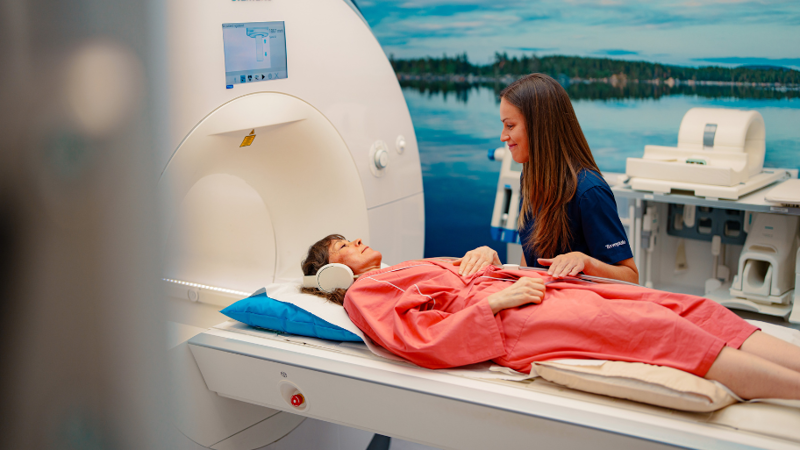First aid preparedness in companies requires action and courage
First aid skills increase resilience, but a barometer survey of Finnish organizations' first aid capabilities published in October reveals that the number of trained personnel is alarmingly low.

Since the beginning of 2025, Terveystalo has been a Red Cross First Aid ARVOkumppani® partner and has provided all first aid training as certified SPR first aid training. At the beginning of October, the Red Cross First Aid published its first First Aid Barometer, which was also responded to by Terveystalo's corporate customers. The barometer highlighted important observations about the current state of first aid preparedness in Finland.
Statistics show that although first aid skills are a key part of crisis resilience and overall corporate safety, only 2% of the total population and less than 8% of working-age people aged 20-59 participate in first aid training each year. In light of these figures, Finland's first aid preparedness lags behind other Nordic countries, as statistics and practices show clear differences between countries. In Norway, for example, first aid training is part of the national curriculum, and in Denmark, first aid skills are a mandatory part of obtaining a driver's license. In these countries, the integration of first aid training into everyday structures increases citizens' readiness to help and act in emergency situations. In Finland, a similar systematic approach has not yet been adopted, except in occupational health.
– In today's world, we are constantly competing for people's time and attention. We know that people's attention spans have become shorter, and of course the debate about efficiency has a direct impact on how much time is generally available for training. Even in occupational health, the average level of training coverage in organizations is just the recommended 5% limit, which is very low compared to other Nordic countries when assessing our crisis resilience, says Jukka Pitkänen, Chief Medical Officer at Terveystalo Healthcare Services.
Online and more intensive first aid courses are becoming increasingly popular
The general trend is that shorter first aid training courses are growing in popularity. According to SPR First Aid statistics, their share of all courses has risen from 25% to 35% in five years.
– We are also seeing a similar trend towards shorter first aid courses in occupational health. In addition, combined training courses, where part of the learning takes place online and part in classroom training, have recently grown in popularity, as they allow participants to complete the theoretical part flexibly and learn practical skills in classroom training. On the other hand, demand for classroom training has remained unchanged. There is still a need and demand for practical exercises after the coronavirus years, says Tarja Tenhonen, Senior Occupational Health Nurse at Terveystalo.
In addition to technical skills training increases also the courage to act
In connection with the publication of the barometer, a panel discussion on crisis resilience was held, in which Terveystalo's Pitkänen participated. The discussion highlighted that, in addition to technical first aid skills, the courage to help is equally important, and developing both requires continuous training and a change in attitude.
– People's willingness to help in an emergency situation depends heavily on whether they believe in their own abilities. First aid training therefore not only teaches technical skills, but also strengthens courage and readiness to act in a real situation. This is particularly important in workplaces where quick action can save lives. Workplace safety never happens by chance, but is built on expertise, preparedness, and responsibility, Pitkänen notes.
Regularly practised first aid skills improve the safety of the entire community
Every workplace should have people with first aid skills who can act quickly and effectively in a crisis situation. Research shows that first aid skills need to be practiced regularly, because without repetition, skills are forgotten and the courage to use them diminishes.
– It is a good idea to organize concise training sessions and exercises based on the company's risk assessment and needs on an annual basis. It is also important to dispel fears about liability issues related to providing assistance and to encourage people to take active responsibility for helping themselves and others. At Terveystalo, for example, we have decided to offer every Terveystalo employee the opportunity to regularly train and maintain their first aid skills so that in an emergency, everyone has the knowledge and courage to act, says Pitkänen.
Read more occupational health articles

Terveystalo's digital services have been awarded the internationally recognized ISO27001 information security certification.
Terveystalo's information security practices, processes, and risk management are in line with international best practices.

Does massage help relieve stress? – Touch restores and calms the body and mind
Stress is not always visible on the outside, but the body does show signs when the strain increases. According to Lassi Ylönen, a trained massage therapist at Terveystalo Rela, the body often communicates stress through subtle signs.

Circular economy and artificial intelligence boost performance and improve care
At the heart of sustainable healthcare, technology serves as a tool for improving both the quality of care and accountability. Terveystalo favors solutions that combine sustainability, cost-effectiveness, and medical expertise.

Psychologist: How to make Christmas a relaxed and personal celebration
For many, the anticipation of Christmas begins when cities are decked out in seasonal lights and the first chocolates, calendars, and gingerbread cookies appear on store shelves. Christmas carols ring out and the Tonttuparaati choir sings “Kiire jo on! Kiire jo on!” (Hurry up! Hurry up!). This warm and atmospheric celebration also brings other feelings to mind: how on earth can we get through all this without losing our joy and peace in the rush?

Terveystalo and Gosta Labs deepen their cooperation: the goal is to streamline work with a superior patient information system
Terveystalo is deepening its cooperation with Finnish health technology company Gosta Labs and investing €1 million in the company as a minority investor. The aim is to jointly develop artificial intelligence solutions that improve the quality of care and the efficiency of reception work as part of Terveystalo's new patient information system, Terveystalo Ella.

Flu season has begun: 7 tips how doctors prevent the flu
The common cold is prevalent in Finland throughout the year. However, viruses spread more readily in the fall, and the influenza season typically begins at the end of the year.